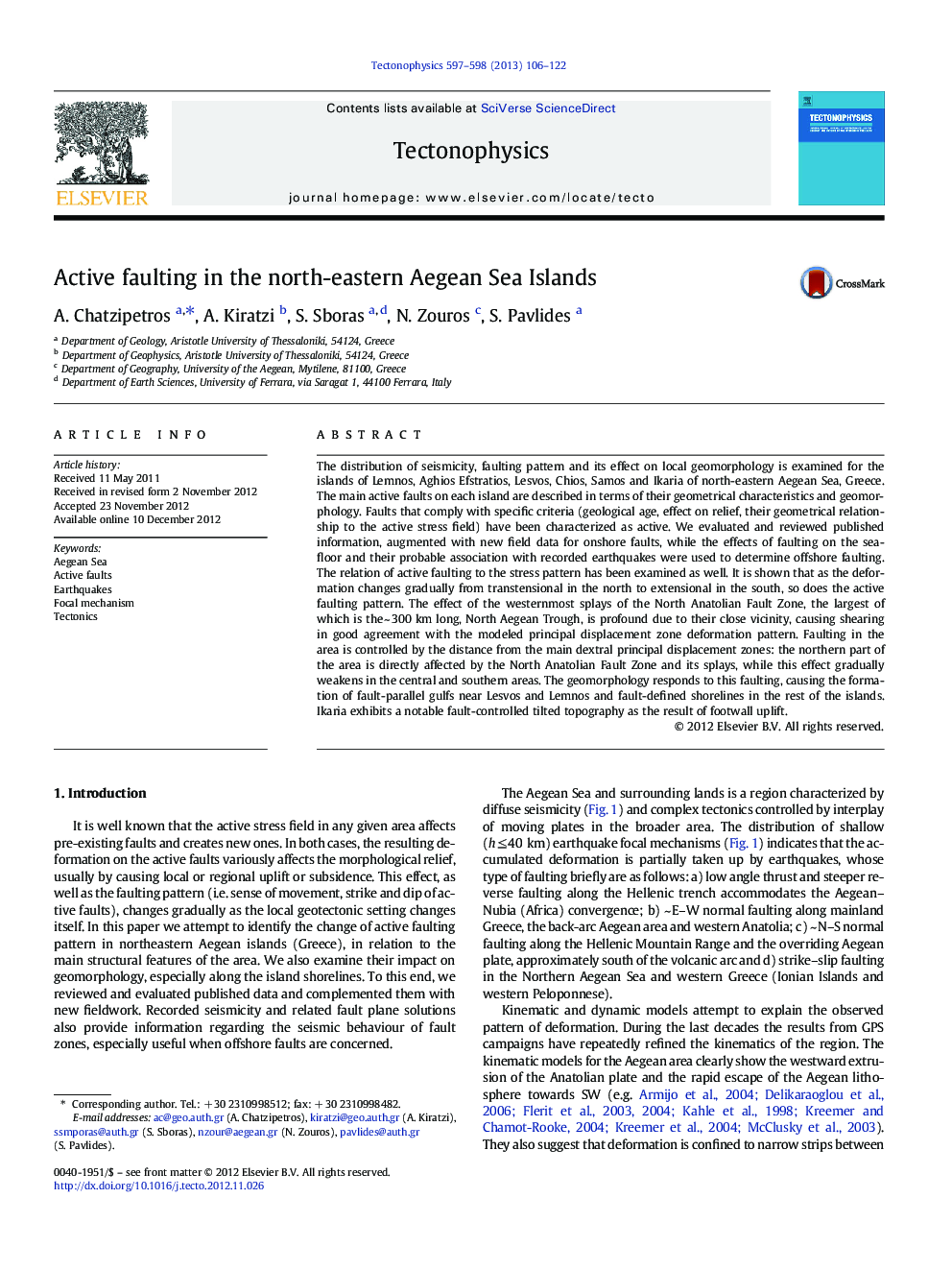| کد مقاله | کد نشریه | سال انتشار | مقاله انگلیسی | نسخه تمام متن |
|---|---|---|---|---|
| 4692402 | 1636789 | 2013 | 17 صفحه PDF | دانلود رایگان |
The distribution of seismicity, faulting pattern and its effect on local geomorphology is examined for the islands of Lemnos, Aghios Efstratios, Lesvos, Chios, Samos and Ikaria of north-eastern Aegean Sea, Greece. The main active faults on each island are described in terms of their geometrical characteristics and geomorphology. Faults that comply with specific criteria (geological age, effect on relief, their geometrical relationship to the active stress field) have been characterized as active. We evaluated and reviewed published information, augmented with new field data for onshore faults, while the effects of faulting on the sea-floor and their probable association with recorded earthquakes were used to determine offshore faulting. The relation of active faulting to the stress pattern has been examined as well. It is shown that as the deformation changes gradually from transtensional in the north to extensional in the south, so does the active faulting pattern. The effect of the westernmost splays of the North Anatolian Fault Zone, the largest of which is the ~ 300 km long, North Aegean Trough, is profound due to their close vicinity, causing shearing in good agreement with the modeled principal displacement zone deformation pattern. Faulting in the area is controlled by the distance from the main dextral principal displacement zones: the northern part of the area is directly affected by the North Anatolian Fault Zone and its splays, while this effect gradually weakens in the central and southern areas. The geomorphology responds to this faulting, causing the formation of fault-parallel gulfs near Lesvos and Lemnos and fault-defined shorelines in the rest of the islands. Ikaria exhibits a notable fault-controlled tilted topography as the result of footwall uplift.
► We identify the main active fault zones of the northeastern Aegean islands (Greece)
► Faulting pattern changes gradually from North to South
► Faults may be explained as shears of the splayed North Anatolian Fault Zone
► Focal mechanisms are in good agreement with this deformation model
► The geomorphology of the islands is largely controlled by neotectonics
Journal: Tectonophysics - Volumes 597–598, 19 June 2013, Pages 106–122
